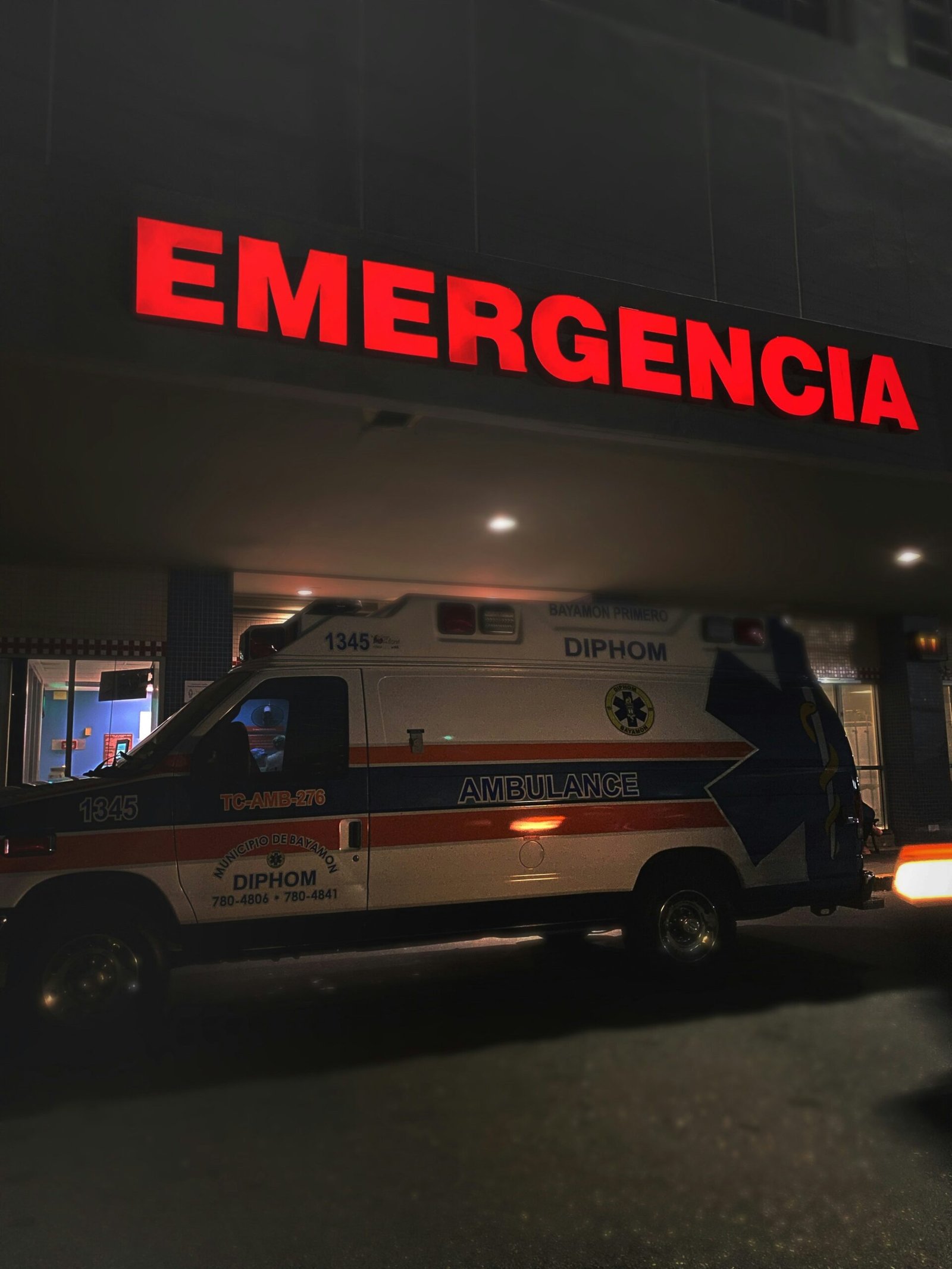
Understanding the Importance of an Evacuation Plan
In today’s unpredictable environment, the necessity of a comprehensive evacuation plan cannot be overstated. An evacuation plan serves as a formal response strategy, designed to ensure safety during emergencies that may arise from various scenarios such as natural disasters, fires, or other significant threats. The absence of such a plan can lead to confusion, panic, and potentially life-threatening situations.
Natural disasters, including floods, hurricanes, and earthquakes, often require immediate and decisive evacuation measures. Emergency officials may issue mandatory evacuations, and having a well-structured plan allows individuals and families to respond quickly and efficiently, minimizing risks. Similarly, fires, whether residential or business-related, can erupt unexpectedly. An evacuation plan aids in swift movement to safety, reducing smoke inhalation and the likelihood of injuries.
Moreover, other threats such as terrorist attacks or hazardous material spills can prompt an immediate evacuation. During these incidents, a predetermined evacuation route and designated meeting points can significantly enhance safety. Without a comprehensive evacuation plan, individuals may become disoriented, waste precious time, or inadvertently put themselves in greater danger.
Moreover, being unprepared for an evacuation can lead to adverse psychological effects, such as increased anxiety and panic. Such scenarios underscore the importance of regular drills and discussions about evacuation routes and safety measures. It is not just a matter of knowing where to go, but being mentally prepared to do so efficiently when the situation arises.
Ultimately, understanding the critical role of an evacuation plan is foundational to personal and community safety. By investing time in creating and practicing this safety protocol, individuals can significantly enhance their resilience in the face of unpredictable emergencies, ensuring better outcomes for themselves and their loved ones.
Assessing Your Risks and Needs
When developing an effective evacuation plan, the first essential step is to assess the unique risks and needs associated with your location and personal circumstances. Each area is susceptible to different hazards, which can range from natural disasters such as floods, hurricanes, or wildfires to human-made threats like industrial accidents. Understanding the environmental factors that could trigger an emergency is crucial in formulating a comprehensive strategy for evacuating safely.
Begin by researching the risks specific to your geographic area. For example, coastal regions may face hurricane threats during certain seasons, while areas near rivers might be more vulnerable to flooding. Additionally, communities located near forests or brushlands can experience wildfires, particularly during dry weather conditions. Consult local government resources or online platforms that provide hazard mapping and data to better understand the risks pertinent to your locality.
Beyond environmental hazards, personal considerations must also be evaluated. Individual health conditions can dramatically impact evacuation needs. For instance, if someone in your household requires mobility assistance or has medical devices that might depend on electricity, it’s imperative to consider routes and transportation that accommodate these requirements. Family dynamics, including the presence of children or pets, should also be factored into your planning. Each family member may have different needs that impact how quickly and safely you can evacuate together.
It is advisable to create a list of all potential threats and categorize them based on their likelihood and severity. This prioritization will guide you in developing tailored evacuation routes and contingency plans that ensure safety for all household members. Proper risk assessment serves not just to inform your evacuation strategy but also instills confidence that you are prepared for emergencies that may arise in your environment.
Creating a Communication Plan
Establishing a robust communication strategy prior to an emergency is crucial for the effectiveness of any evacuation plan. During a crisis, the primary objective is to ensure that all family members are informed and able to reach each other without unnecessary delays. As various situations may arise when an evacuation is inevitable, it is essential to have a coherent and well-defined communication approach in place.
The first step in developing a communication plan is to select designated contacts among family members or group members in case of an emergency. This can be particularly helpful if family members are separated during an evacuation. Assigning an out-of-area contact person who is not in the immediate vicinity can serve as a reliable point of communication. In moments of chaos, having a pre-established person to reach can streamline the process of checking on each other’s safety.
Furthermore, embracing multiple communication channels is vital. Relying solely on mobile phones can be inadequate due to potential network outages. Therefore, it is advisable to incorporate various methods, such as texting, social media, and even email, into the communication strategy. These additional channels can provide alternative routes for updates and information when traditional methods fail.
Clearly communicate the specifics of the evacuation plan, including designated meeting points and preferred routes. Family members should practice this plan together, ensuring that everyone is familiar with the steps to take under various scenarios. Regularly reviewing and updating the communication plan is equally important, as family dynamics or contact information may change over time.
In conclusion, fostering a solid communication plan can significantly enhance the overall effectiveness of your evacuation strategy. This plan ensures that all family members remain connected and informed, even amidst the tumult of an emergency situation.
Designating a Safe Meeting Place
Having a predetermined safe meeting place outside your home is a crucial component of any effective evacuation plan. In stressful situations, such as natural disasters or emergencies, clear communication and organization can significantly mitigate confusion and anxiety. By selecting a designated location where all family members can reunite, you ensure a smooth assembly process outside the immediate danger zone, even when traditional routes may be obstructed.
Choosing an accessible location involves several considerations. First, it should be easily reachable by all family members, regardless of their age or mobility. A nearby park, community center, or school can serve as suitable options. These places are often familiar, and their visibility makes it easier for family members to find each other. Additionally, ensure that the meeting spot is situated in a safe area, away from potential hazards associated with specific emergencies, such as flooding or fire risks.
It is advisable to frequently communicate and practice your evacuation plans as a family, making sure everyone is aware of the designated meeting place. Regular discussions can aid in reinforcing the importance of the location and ensuring that everyone remembers it during a crisis. Establishing multiple meeting points may also be beneficial, especially if the primary location becomes inaccessible due to unforeseen circumstances.
In essence, a designated safe meeting place functions as a focal point for family reunification during an evacuation. This reduces the risk of family members being unaccounted for and aids in maintaining a sense of security amidst the turmoil. Prioritizing this component of your evacuation plan not only enhances safety but also fosters confidence among your loved ones when faced with emergencies.
Preparing an Emergency Kit
Creating an effective emergency kit is a fundamental aspect of any evacuation plan. This kit should be tailored to your individual needs and include essential supplies that ensure short-term survival. One of the most critical components of an emergency kit is water. It is typically recommended to have one gallon of water per person per day for at least three days, for both drinking and sanitation purposes. This provision can make a significant difference in survival during a crisis.
Food is another vital inclusion. Opt for non-perishable items that are easy to prepare and consume, such as energy bars, canned goods, and dried fruits. A minimum three-day supply is advisable, and consider dietary restrictions or preferences when selecting items.
First aid supplies are indispensable in any emergency scenario. A well-stocked first aid kit should contain bandages, antiseptics, pain relievers, scissors, and any specific medications you or your family members require. It is prudent to personalize your kit with important medications and medical supplies tailored to the needs of all family members.
Important documents must not be overlooked. Store copies of identification, insurance policies, medical records, and emergency contact information in a waterproof container. This scenario ensures essential information is readily accessible when needed.
Moreover, including items like flashlights, batteries, a whistle, and multi-tools can prove invaluable for communication and utility in crisis events. It is also beneficial to pack blankets, a portable phone charger, and hygiene products to maintain comfort and sanitation during your evacuation.
Finally, it’s crucial to regularly review and update your emergency kit. Check expiration dates on food and medications every six months to ensure that your supplies remain viable. Proper preparedness can significantly increase your chances of safety and security during an emergency situation.
Planning Your Evacuation Routes
Establishing multiple evacuation routes is a critical component of your emergency preparedness strategy. This ensures that you have various options available should your primary route become inaccessible. When planning these routes, utilizing maps and GPS tools can significantly enhance your ability to navigate effectively during a crisis.
It is not only essential to identify a primary route but also to plan for secondary paths that will enable safe exit from your area. When preparing, it is advisable to familiarize yourself with your local geography and the roads leading out. Marking these routes on a physical map or within a GPS device ensures you can quickly access information if technological services are disrupted.
Understanding local traffic patterns is another important aspect of evacuation route planning. Take note of peak hours and common congestion points that could hinder movement during an emergency. In times of crisis, even minor delays can have significant consequences, which is why knowing alternative routes is crucial. Regularly reviewing and updating your routes based on any changes in local traffic patterns, road conditions, or construction can prove invaluable.
In addition, pay attention to potential obstacles that might render your planned evacuation routes unusable. For instance, during severe weather events or natural disasters, certain roads may become blocked by debris or floodwaters. Researching and keeping track of historical closure patterns can enhance your preparedness and allow for quicker decision-making in an emergency.
Maintaining clear communication with family or household members about designated evacuation routes is also paramount. Practice drills that include route navigation can help ensure everyone knows where to go and what to do during an emergency. In this way, planning your evacuation routes becomes a structured and integrated aspect of your comprehensive evacuation strategy.
Transportation Considerations
Transportation plays a crucial role in any evacuation plan, as it directly impacts how swiftly individuals can leave a dangerous area. Ensuring that vehicles are adequately prepared and maintained is vital for an effective evacuation strategy. Regular vehicle maintenance checks should include inspections of tires, brakes, lights, and fluid levels. This preparation can prevent mechanical failures during an urgent departure. Furthermore, drivers should familiarize themselves with the routes to be taken, including alternatives to avoid congested areas where traffic may impede movement.
Fuel reserves are another key element in this aspect of the evacuation plan. An adequate supply of fuel ensures that vehicles are ready to travel prolonged distances if necessary. It is recommended to keep the gas tank at least half full, particularly during periods of anticipated emergencies. Additionally, understanding the availability of fuel sources and potential shortages is important for planning purposes. It is also wise to identify the nearest gas stations on preferred routes and monitor their operational status during emergencies.
For individuals who may not have access to personal vehicles, exploring alternatives is essential. Public transportation options, such as buses or trains, can provide critical services during an evacuation. Many cities have designated evacuation routes for public transit, which can assist those without private transportation. Moreover, community resources, such as volunteer organizations, can be invaluable. They may offer rides or coordinated transportation services for vulnerable populations. In some cases, local authorities might establish community transport hubs to facilitate evacuations effectively.
In conclusion, a well-thought-out transportation plan can significantly enhance the safety and efficiency of evacuations. By ensuring vehicles are in good condition, maintaining fuel reserves, and exploring alternative transportation options, individuals can be better prepared for unforeseen emergencies. Being proactive in these areas can make a substantial difference in the outcome of an evacuation situation.
Evacuating Pets and Livestock
Including pets and livestock in your evacuation plan is vital for ensuring their safety and well-being during emergencies. In many cases, animals can become stressed during evacuations, which may lead to unpredictable behavior. Therefore, planning ahead is essential to minimize risks and promote a smoother evacuation process. First and foremost, it is crucial to identify potential transportation methods for your pets and livestock. Ensure you have access to a reliable vehicle that is suitable for your animals’ size and needs.
Compile a list of essential supplies to pack for your pets and livestock. This includes food, water, medications, and leashes or harnesses. It is advisable to have a pet first-aid kit readily available, as well as carriers or crates to contain smaller animals securely. For larger livestock, ensure you have suitable halters and travel gear. When preparing for an evacuation, familiarize yourself with nearby shelters or accommodations that accept animals. Many hotels and lodges have pet-friendly policies, but it is prudent to confirm in advance, as availability may vary based on the emergency’s scale.
Additionally, consider the unique needs of different species in your care. For instance, certain livestock may require specific feeding schedules or handling techniques, while some pets may require particular settings for comfort. Planning for your animals’ emotional well-being can greatly reduce anxiety, thereby facilitating a smoother evacuation process. Before an emergency arises, take time to have practice drills that involve your pets and livestock. This will not only desensitize them to transportation but offer valuable opportunities to assess and refine your evacuation procedures.
By carefully considering the inclusion of pets and livestock in your evacuation plan, you promote a safer, more organized response during emergencies. Preparing for all eventualities contributes to the well-being of both your animals and yourself, effectively easing the stress associated with evacuations.
Staying Informed During an Evacuation
In the unpredictable nature of emergencies, staying informed during an evacuation is paramount. Access to accurate and timely information helps individuals make informed decisions and navigate through uncertain circumstances. Therefore, relying on various information sources is vital for ensuring safety and preparedness.
Local authorities are often the first point of contact for crucial updates during an emergency. These agencies provide real-time information regarding evacuation orders, road closures, and emergency shelters. It is important to follow official channels such as government websites or dedicated emergency management platforms. They typically disseminate updates to keep communities alerted to any changes that may affect evacuation routes and safety measures.
Emergency services, including police and fire departments, play a critical role in maintaining public safety during a crisis. They often provide tips on safe routes and practices during an evacuation. Utilizing communication methods from these agencies, such as press releases and community alerts, ensures recipients receive information directly from the sources responsible for managing the emergency.
Social media platforms can also serve as valuable tools for staying informed, as many government and emergency service agencies maintain official accounts. These accounts may offer live updates in an accessible format. However, it is advisable to verify information from these platforms through official channels to avoid potential misinformation.
Additionally, utilizing weather apps is essential, particularly in events driven by natural disasters. Many weather applications provide live alerts and updates about changing conditions that could affect safety during an evacuation. Understanding weather forecasts aids individuals in planning their evacuation route and timing more effectively.
In conclusion, being proactive about accessing information from trusted sources enhances situational awareness during an evacuation. Staying informed empowers individuals to respond effectively, following directives from local authorities and emergency services, ensuring personal safety during high-stress situations.


